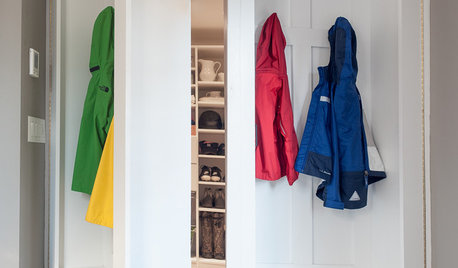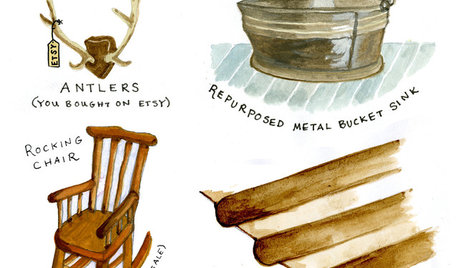Have you tried no-till and returned to tilling?
NilaJones
11 years ago
Related Stories

DECORATING GUIDES5 Decor Trends to Try — and 5 to Rethink
Some style trends are worth jumping onboard. Others you may want to let fade from your memory
Full Story
COLOR9 Fun Ceiling Colors to Try Right Now
Go bold overhead for a touch of intimacy or a punch of energy
Full Story
GARDENING GUIDESGreat Design Plant: Try Blue Bells for Blooms in Dry Soil
This shrub’s violet-blue flowers and silvery foliage brighten low-water gardens all year long
Full Story
MUDROOMSRoom of the Day: This Mudroom Is Just Plain Hot
Wait till you see what’s behind the hooks and bins in this genius family drop zone
Full Story
HOME TECH7 Ways to Charge Up and Connect After Disaster
Products and tips for communicating and keeping essential items running till the power's back on
Full Story
RUSTIC STYLE12 Must-Haves for an Instantly Rustic Home
No need to wait around for just the right hand-me-downs and woodsy finds — with these pieces, you can fake it till you make it
Full Story
FUN HOUZZEverything I Need to Know About Decorating I Learned from Downton Abbey
Mind your manors with these 10 decorating tips from the PBS series, returning on January 5
Full Story
PETSHouzz Pets Survey: Who Rules the House — Dogs or Cats?
New data shows that pets make people happy, and pet owners love spending big to return the favor
Full Story
MOST POPULAR5 Remodels That Make Good Resale Value Sense — and 5 That Don’t
Find out which projects offer the best return on your investment dollars
Full Story
MOST POPULARA Fine Mess: How to Have a Clean-Enough Home Over Summer Break
Don't have an 'I'd rather be cleaning' bumper sticker? To keep your home bearably tidy when the kids are around more, try these strategies
Full StoryMore Discussions







Raw_Nature
pnbrown
Related Professionals
Birmingham Landscape Architects & Landscape Designers · Fort Lee Landscape Architects & Landscape Designers · Rossville Landscape Architects & Landscape Designers · Wheeling Landscape Architects & Landscape Designers · Willowick Landscape Architects & Landscape Designers · Americus Landscape Contractors · Coram Landscape Contractors · Emmaus Landscape Contractors · Eureka Landscape Contractors · Homewood Landscape Contractors · Morrisville Landscape Contractors · New Cassel Landscape Contractors · Pleasant Hill Landscape Contractors · Waldorf Landscape Contractors · Chattanooga Driveway Installation & MaintenanceNilaJonesOriginal Author
pnbrown
harveyhorses
digdirt2
Raw_Nature
jonfrum
NilaJonesOriginal Author
pnbrown
NilaJonesOriginal Author
digdirt2
NilaJonesOriginal Author
NilaJonesOriginal Author
harveyhorses
sunnibel7 Md 7
uncle_t
digdirt2
NilaJonesOriginal Author
wayne_5 zone 6a Central Indiana
pnbrown
veggiecanner
NilaJonesOriginal Author
sunnibel7 Md 7
NilaJonesOriginal Author
NilaJonesOriginal Author
pnbrown
uncle_t
sunnibel7 Md 7
veggiecanner
NilaJonesOriginal Author
emgardener
pnbrown
sunnibel7 Md 7
Creek-side
wayne_5 zone 6a Central Indiana
foolishpleasure
flora_uk
pnbrown
harveyhorses
veggiecanner
NilaJonesOriginal Author
emgardener
harveyhorses
flora_uk
NilaJonesOriginal Author
NilaJonesOriginal Author
pnbrown